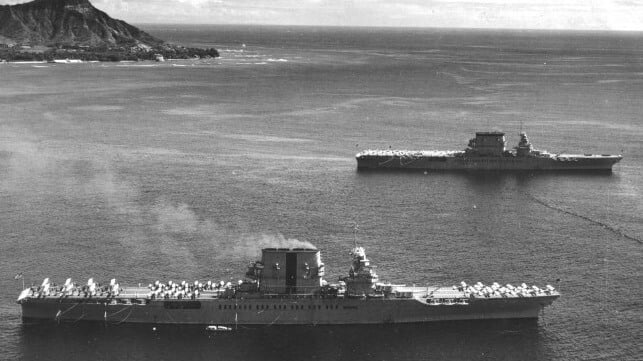Australia Honors Lost American Warships From WWII With New Protections

The wrecks of three U.S ships, including the first U.S Navy aircraft carrier to be lost during World War II, are set to be accorded special preservation status after Australia added their final resting place off the Australian coast was added to the country’s National Heritage List.
The USS Sims, the USS Neosho and the USS Lexington, which participated in the Battle of the Coral Sea during WWII, have been granted a special honor that includes extra protection after the Battle of the Coral Sea Site was added to the list.
The site is located about 1,000 kilometers off the northeast coast of Australia in the middle of the Coral Sea. The four-day battle in May 1942 was a significant turning point during WWII. Japanese forces had enacted Operation MO with the intention of capturing Tulagi in the Solomons and Port Moresby in New Guinea. Had they been successful, the occupation would have led to Japanese aerial dominance over northeast Australia and the sea lanes connecting Australia with the United States.
U.S and Australian allied forces were decisive in defeating the Japanese in the battle, which introduced a new mode of fighting that relied on airpower rather than cannonfire. The entire four-day battle was fought using aircraft and aircraft carriers and marked the first time naval engagement took place without opposing ships ever making contact. The Battle of the Coral Sea had significant casualties, with the U.S losing over 600 servicemen.
In 2018, a search led by US billionaire Paul Allen's research organization located the wreck of Lexington, which went down during the battle with the loss of 216 crew and 35 aircraft.
Australia, which regards the Battle of the Coral Sea as the "Battle that saved Australia," has now added the site where the three ships are resting to the National Heritage List. Sitting more than 3,000 meters below the ocean surface, the shipwrecks are incredibly well preserved.
“The Second World War was a time of such terrible and unimaginable loss suffered by so many and the Battle of the Coral Sea was central to keeping Australians at home safe,” said Murray Watt, Minister for the Environment. “By including the site on the National Heritage List, we can ensure greater protection for a number of historic shipwrecks while preserving a significant piece of world history for future generations.”
